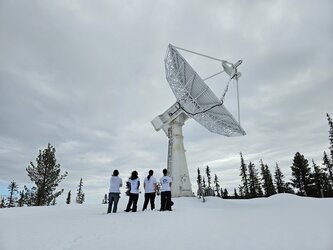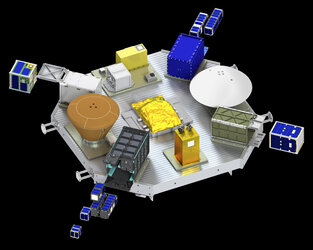

GAREF AEROSPATIAL club members working on satellite testing
Thank you for liking
You have already liked this page, you can only like it once!
Based in a single-story building near the Georges Carpentier stadium in Paris’s 13th district, France, the amateur space club GAREF AEROSPATIAL gather regularly after school to talk, work and be inspired by space – and design satellites. Aged between 15 and 25 years old these young adults have built the PariSat experiment flying on Ariane 6 on their own, during their free time.
The goal of PariSat’s project is simple: what materials work best to get rid of heat in space? But for this project flying on Europe’s new rocket Ariane 6, finding the answer is less important than the journey itself.
Eight square plates just 4 cm wide are being tested to see how they function as space radiators. The plates were chosen to test a wide variety of properties such as the material itself, its colour, and how they react to being heated and cooled as they fly through space on the Ariane 6 upper stage for just under three hours. A temperature sensor attached to each plate will have its data beamed back to ground control to analyse to provide real-life readings of “black-body radiation”.
The experiment is allowing the club to test and verify the Stefan-Boltzmann law of thermal radiation that was discovered in 1884 and models how an object absorbs and radiates heat.
-
CREDIT
GAREF AEROSPATIAL -
LICENCE
ESA Standard Licence

GAREF AEROSPATIAL club members at Kiruna station

PariSat during electromagnetic testing

Ariane 6 science-after-school experiment sends back…

Black body experiment on Ariane 6 captures Pale Blue Dot

